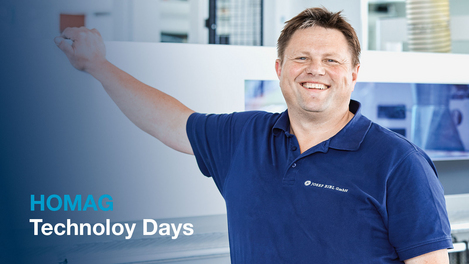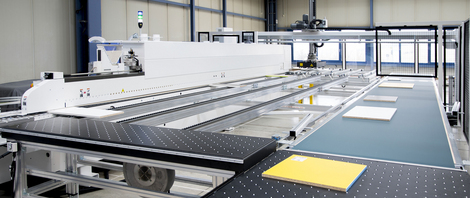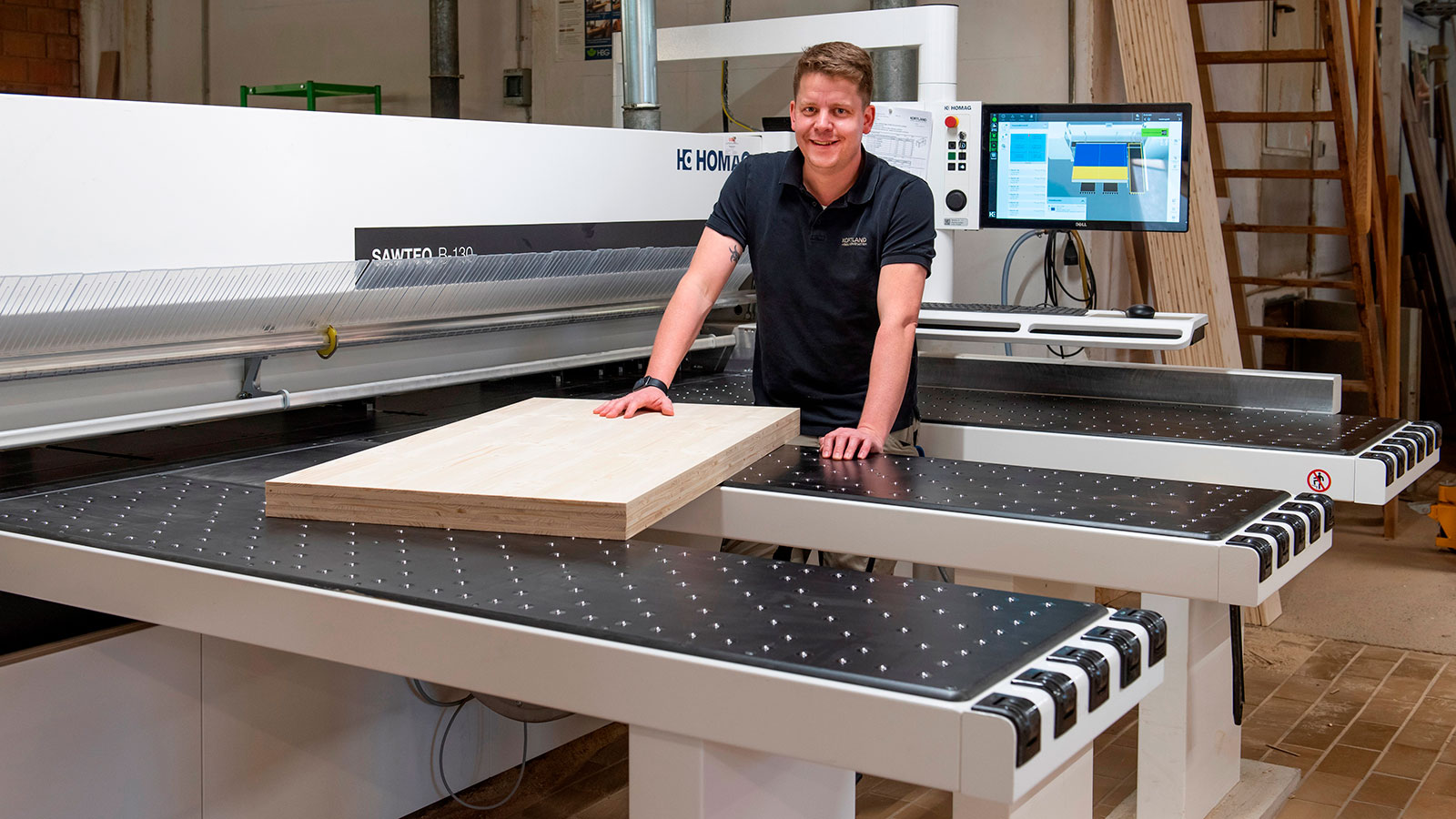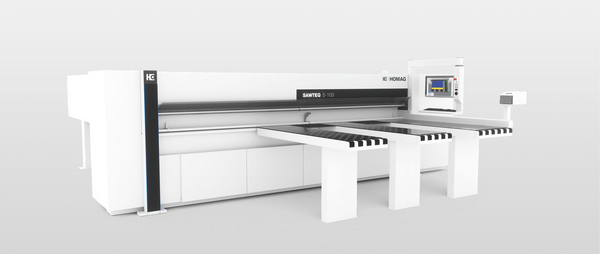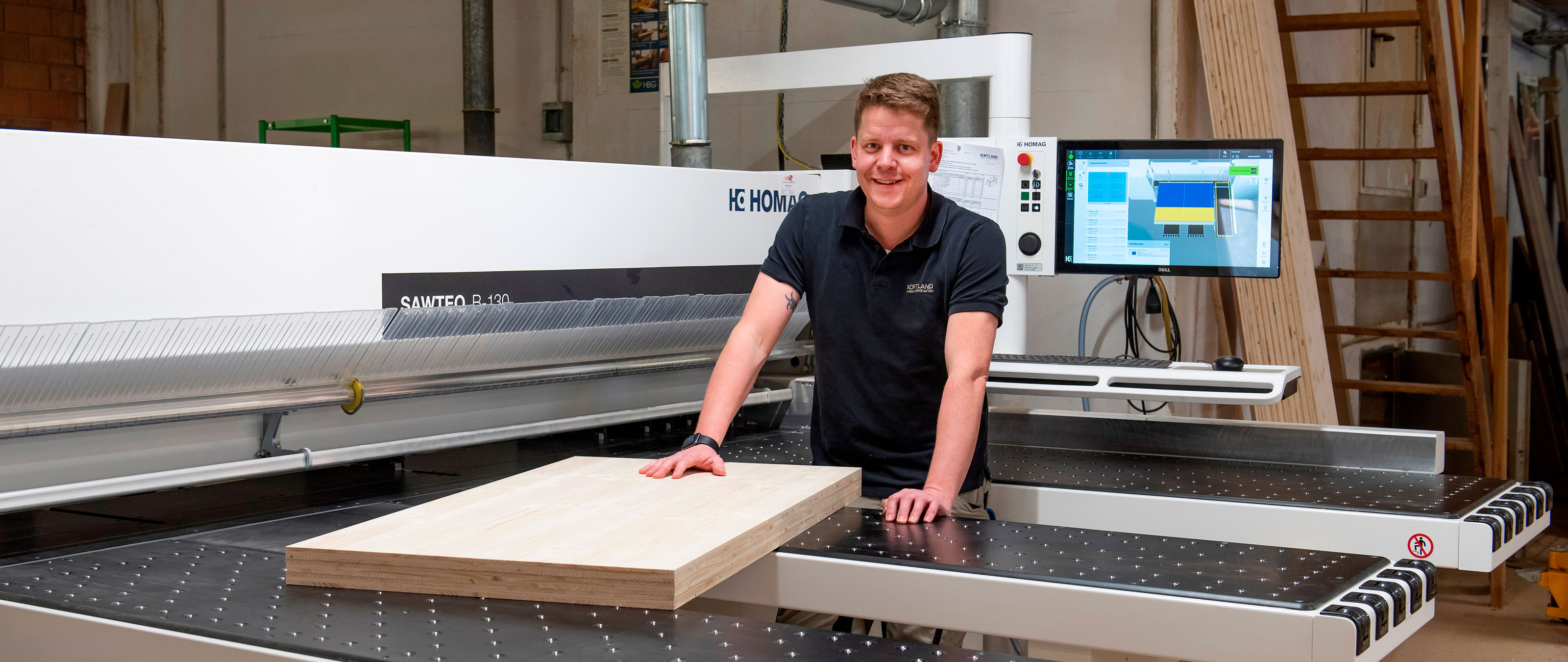
The smallest panel dividing saw from HOMAG gets plenty done. Peter Kortland, owner of Kortland Möbelwerkstätten in Eggermühlen, Lower Saxony, was surprised by the initial results: "Just two and a half months after commissioning, we had already cut out a good 20,000 parts from 3,000 unprocessed panels with our new SAWTEQ B-130. A total of 15,000 individual cuts, which when added together, result in a total cut length of 15 kilometers!"
This is all the more remarkable when you consider that within the company, panel cutting is mainly used for a small portion of Kortland’s overall order-based production of store fitting components. This segment accounts for around 15 to 20 percent of the annual turnover. Business with private customers, for which Kortland builds individual residential fixtures and furniture, is also on a comparable scale. However, with a share of around 60 percent, the main sales driver is the production of solid wood furniture – especially table tops and bed frames. These are produced by Möbelwerkstätten on behalf of large, national sales agencies, which in turn sell the products all over the world.
Consistent: on course for growth with the latest technology
The current level of production was not always the case. When Peter Kortland took over the company from his uncle in 2004, he was still studying wood technology engineering at the University of Cooperative Education Melle. The company's product portfolio at the time consisted solely of solid wood furniture made of rustic oak. This was a market segment without a future, and the company went into bankruptcy.
As a result, Kortland reorganized the company together with a senior journeyman. This evolution was very successful: Today, the company employs 25 people and is growing moderately but steadily. "Even in the difficult coronavirus year of 2020, we were able to increase our sales by five percent," says Kortland. The 39-year-old's recipe for success: "The quality and price of our products have to be right. This can only be done with modern technology, and this is where HOMAG comes into play."
Routine: a new HOMAG every two years
The first HOMAG machine was purchased in 1999 by the current owner's uncle: A BOF 31/40 process router, which is still fully utilized. In 2014, the BMG 311 Venture five-axis milling machine was added, followed in 2016 by a HOMAG edge banding machine, and two years after that by the small BHX 055 CNC processing center. The latest acquisition is the SAWTEQ B-130, which was installed in December 2020.
The smallest panel dividing saw from HOMAG is the first ever for the company in Eggermühlen. "We have historically come from solid wood furniture production and this is our main focus," explains Kortland. "A panel dividing saw is not necessary for this and is somewhat outside of the industry. However, the growing store fitting components business has changed this, meaning we are also processing more and more panel material."
In January 2021 alone, the total was around 3,000 square meters of mostly beech and birch plywood. In addition, there are pinewood and fiberboard panels. "In the past, we would have passed all the material over the circular bench saw with two men. Today, one employee performs the same work in a shorter time on the SAWTEQ B-130!" This increase in efficiency, a comparatively low price and the small amount of space required for the HOMAG entry-level saw were ultimately decisive when purchasing for the wood engineering specialist.
"I have been looking around the market since 2019 and I have asked various manufacturers. No one was able to offer us a more suitable saw than the SAWTEQ B-130," says Kortland, explaining: "The entry-level models from other renowned manufacturers are bigger and therefore more expensive. At best no-name providers would have had alternatives, but they are out of the question for me. After all, I know what I'm getting at HOMAG."
Tremendous: reduced fatigue for employees
The employees are also enthusiastic about the new acquisition. "In the past, I almost had to persuade my people to do the panel cutting. Today, it's different – everyone likes working on the new HOMAG saw," says Kortland. The main reason is the significantly improved ergonomics. In the past, two employees had to move the beech plywood unprocessed panels by hand and guide them over the circular bench saw. With 15-mm thick panel formats with dimensions of 250 x 150 cm, it is really heavy work.
Today there is a vacuum lift in front of the saw. The employee effortlessly lifts each panel from the stack, feeds the saw and starts cutting. Done. "The reduction in fatigue is tremendous," says Kortland. "In my opinion, this is the biggest benefit of the SAWTEQ B-130." Destacking the parts is just as comfortable with the vacuum lift and usually does not require any special strategy. At least not for the store fitting components.
Huge: the potential for savings
"We have a lead time of up to 20 weeks for store fitting components and can combine cutting jobs optimally," explains Kortland. This allows simple cutting patterns. As a rule, the panels are processed into parts in two dimensions. The company decided against purchasing a label printer on the saw. "We have purchased the SAWTEQ B-130 for the store fitting jobs. Labeling the parts is really not necessary," says Kortland, adding: "Today I would make a different decision because we are increasingly also using the new saw for private customer orders. For example, to produce cabinets made of panel material. There can sometimes be more than 50 different parts per order, so part identification would be helpful."
In addition, the HOMAG solution shows what it's really made of for such complex orders. A keyword is optimization. The software calculates the best possible cutting pattern for each order and thus saves a lot of time and material. In the past, the company had anticipated 20 percent waste for complex orders from the outset. "I just put more material on the circular saw and told the employee to cut out the required parts," recalls Kortland. "Then the calculations and measurements started until the puzzle was finished. Today, we send the finished cutting pattern to our HOMAG saw. The operator presses the start button and the SAWTEQ starts. It's great!"
Conclusion: every time!
Of course, panel material products are only a small market for Kortland Möbelwerkstätten. However, with the SAWTEQ B-130, the company is always in a position to grow in this segment and gain new customers. The range of services has grown further – as with every previous HOMAG investment. Would he choose the SAWTEQ B-130 again with present-day experience? Kortland does not need to think twice about this question and answers: "Every time!"
“In my view, there is no alternative to the SAWTEQ B-130 on the market. The entry-level models from renowned competitors were all too big and too expensive for our purposes.”Peter Kortland

